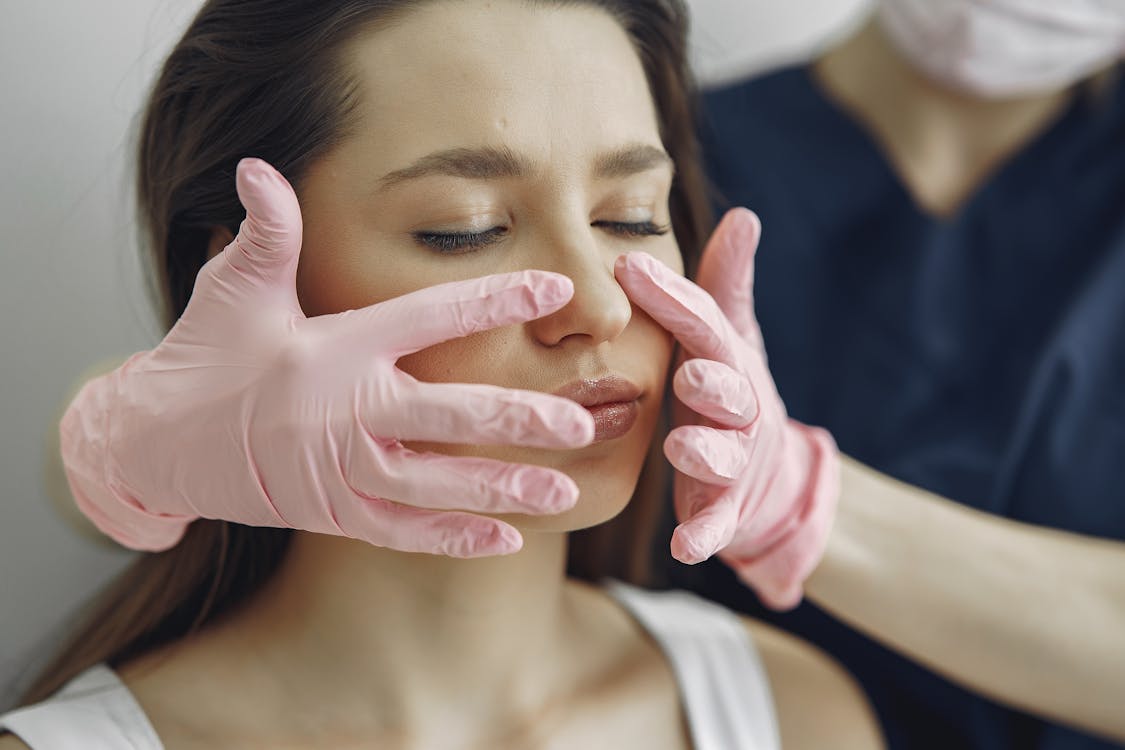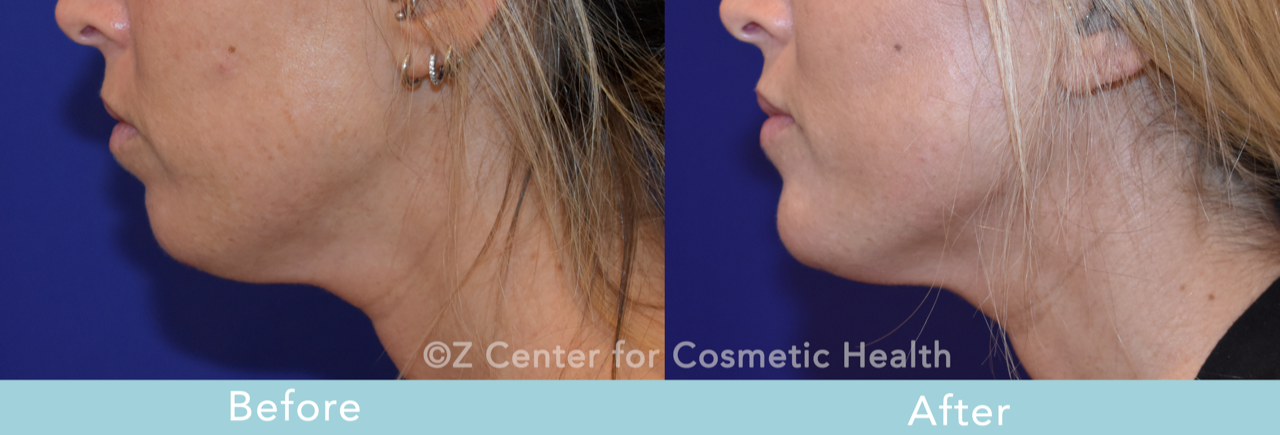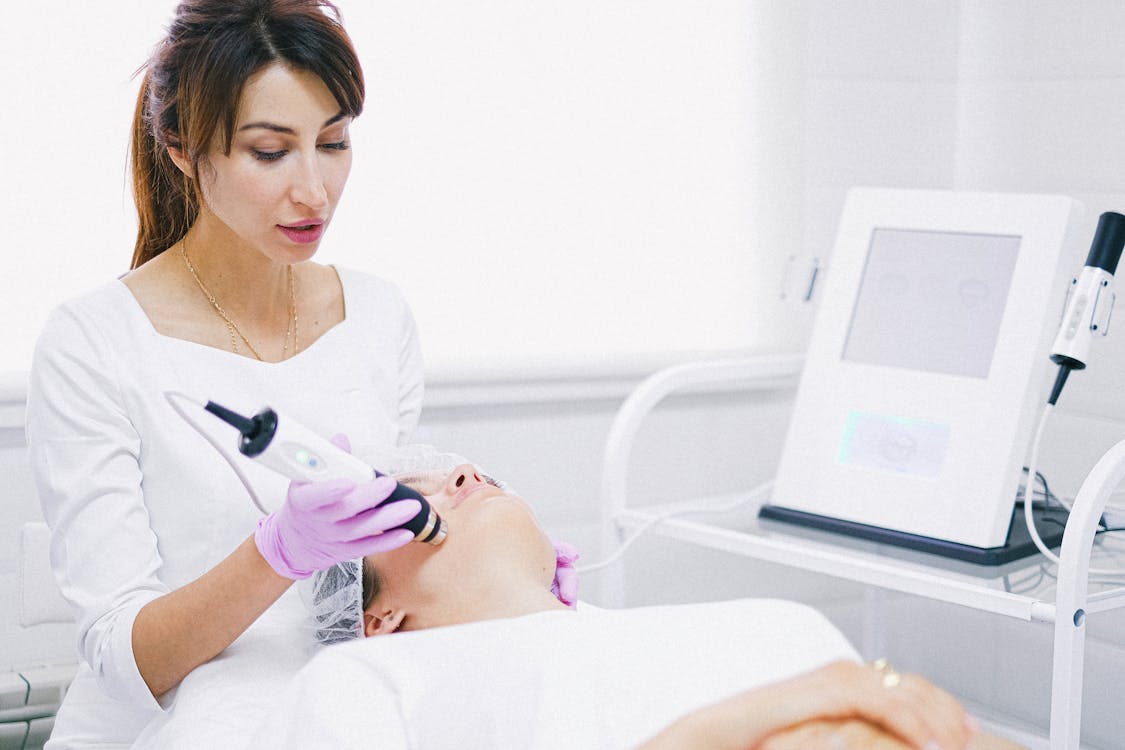Fillers, Laser Hair Removal, Medical Spa Information, Mole Removal

There are so many valuable reasons to choose the various treatments offered at medical spas. Not only can they improve the way you feel about your appearance, but that results in a boost to your confidence, which translates into a plethora of benefits in your daily life. However, as with any kind of medical treatment, you can expect there to be some downtime as you recover.
Part of your recovery time is to maximize the results of the treatment or treatments you choose. In the days after treatment, it’s important to follow aftercare instructions carefully so that you can get the most out of your procedure. This guide will help you understand your med spa treatment options, as well as how to get the results you want without a lot of downtime.
Dermal Fillers

Dermal fillersFillers
Preparation
On the day of treatment, you will need to be prepared for your fillers. This is a great way to enhance the results and ensure that you get what you are hoping for from the procedure. In addition to helping get outstanding results, the following steps can also minimize side effects and downtime:
- Avoid alcohol for 24 hours before your fillers
- Start taking supplements such as Arnica (with doctor’s approval), which can help minimize swelling and bruising
- Avoid over-the-counter pain medications for one week before fillers (ibuprofen, Motrin, Aleve, etc.) These can thin the blood and increase the risk of bruising.
- Avoid using topical treatments and anti-aging products, such as retinoids and retinol, for 72 hours before fillers
Immediately Following Fillers
In the 24 hours after your filler injections, it’s important to follow your injector’s advice closely. The first few days after fillers is a good indication of how your skin will look months down the road and you can optimize that by following aftercare instructions, which may include the following steps:
- Make sure you stay well hydrated, particularly with hyaluronic acid fillers
- Sleep on your back, which prevents putting pressure on the treated areas
- Avoid extreme temperatures, both hot and cold, which helps control redness and swelling
- Avoid UV rays and wear plenty of sunscreen
- Skip your workout for the 24 hours following your fillers
Maximize Your Results

Beyond the first 24 hours, you can likely return to your normal daily activities and get on with your typical routine. However, there are also some important steps you can take to maximize your results and prolong them at the same time.
- Wear sunscreen – Unprotected sun exposure can cause skin damage, including dynamic wrinkles, brown spots, and skin discoloration. So, it’s vital to wear SPF anytime you go outdoors and reapply often. For the same reasons, wear a hat and sunglasses when you’re outside.
- Choose products for your skin type – The right skincare products are a vital part of preserving your fillers for as long as possible. Talk to your aesthetic physician about the correct options for your skin type and skincare goals.
- Control stress – When you’re stressed your body releases cortisol, which contributes to aging and can interfere with the way your body metabolizes your fillers. Stress reduction techniques can help preserve your dermal injections. Try yoga, deep breathing, meditation, or other activities that calm you.
Fat Removal

There are a few types of fat removal treatments, with liposuction being the most well-known. These procedures are designed to tone and sculpt the body by dissolving, freezing, or suctioning out fat cells so they can be reabsorbed by the body. It’s important that you undergo fat removal done by board-certified physicians or other medical professionals. The steps you take before and after treatment have a dramatic influence on your results, both short-term and long-term. Fat removal can be done in many areas of the body, with the stomach, legs, hips, and buttocks being some of the most common.
Preparation
There are a variety of lifestyle choices you can make in the two weeks leading up to your fat removal procedure that ensure the best results, as well as make the treatment safer for you. Failing to follow pre-care instructions could mean having to reschedule your procedure. Some treatments do not involve any downtime. In the case of more invasive procedures such as liposuction here’s what you will likely be asked to do:
- Quit smoking
- Don’t take blood thinning medication, such as aspirin, Advil, Motrin, etc.
- Stop taking supplements (with a doctor’s approval)
- Avoid sunbathing and/or tanning beds
- Find someone to care for you for 24 hours after treatment
- Don’t eat or drink for 6 to 8 hours before surgery
- Avoid moisturizer and body wash the day before surgery
Immediately Following Fat Removal
To achieve optimal results from your fat removal process, it’s important to take care of yourself afterward. While this is an outpatient procedure and you will get to go home the same day, there will be instructions you need to follow on your own as you recover. In the days following your treatment, take the following steps (as provided by your surgeon):
- Wear compression garments or elastic bandages, which are provided by your surgeon
- Ice packs may control swelling, as recommended by your surgeon
- Follow instructions for taking care of drain sites (if you have them)
- Take pain medication as recommended to control pain and swelling
- Stay hydrated – water is always your best choice, but broth and fruit juice are acceptable alternatives
- Limit activity for a week or two as you heal – schedule time off work if you have a physically demanding job as you’ll need a few days of downtime to effectively heal
Maximize Your Results

Fat removal is certainly a good choice for many people, but to get the most out of the treatment, you will need to make some lifestyle choices to enhance and maintain the results. Your surgeon will go over specific suggestions with you, but you can expect the following advice:
- Resume light exercise after a month – you don’t want to do anything strenuous, but you can begin adding movement back to your routine.
- Stop wearing compression garments after six months – this may vary a bit so follow your surgeon’s advice regarding when you can stop wearing yours.
- Eat a healthy diet – making healthy food choices will help maintain your new physique so choose nutritious foods from each food group and balance your calorie intake.
- Drink plenty of water – this is an ongoing piece of advice that you should adhere to.
- Get enough rest – this is important throughout recovery and beyond as it gives your body a chance to recharge, which supports healthy lifestyle choices when you’re awake.
- Exercise as recommended – long term you should be getting plenty of physical activity regularly to support your weight loss and healthy body.
Hair Removal

Laser hair removalexcess hair
Preparation
Getting ready for laser hair removal is fairly simple and won’t take too much time. However, being properly prepared means you will get the best results and that you can prolong them as long as possible. Here’s what you should do before hair removal:
- Shave the area being treated (if it’s your first treatment, leave a small patch of hair so your aesthetician can look closely at it)
- Don’t wear lotion, deodorant, or makeup on the day of your appointment
- Avoid direct sunlight for three days before treatment
- Avoid self-tanning products or spray tans for at least two weeks before your appointment
- Avoid alcohol for 24 hours before treatment
- Avoid waxing, tweezing, or threading for four weeks before your appointment
Immediately Following Laser Hair Removal
Because this isn’t considered an invasive procedure, there isn’t as much downtime involved with removing unwanted hair, but you should still follow your treatment provider’s advice regarding what to do immediately after you are finished with your appointment. Aftercare tips may include the following:
- Expect redness and bumps in the hours following the treatment
- Apply cold compresses to the treated area
- Wash the area with mild soap and water and pat dry (not rubbed) for 48 hours
- Avoid moisturizer, lotion, deodorant for 24 hours after treatment
Maximize Your Results
The main thing to remember is that about 5 to 10 days after treatment, hair shedding will occur. This could look like new hair growth but is your dead hairs coming out and falling off. Here’s what you can do to encourage the process and maximize your results:
- Exfoliate the area
- Avoid sun exposure, which reduces the risk of skin discoloration
- Use sunscreen on treated areas for a couple of months following treatment (if exposed to the sun)
- Do not pick or scratch the affected areas
- Avoid using any hair removal products (you can shave)
- Understand that a single treatment may not be sufficient and up to 6-10 sessions may be required for maximal results
Botox
woman holding pen and white cotton candy med spa treatment
Many people make the mistake of comparing Botox to fillers (such as Juvederm), but it works by a different process. Rather than working to replace volume, Botox is injected into the muscles that control facial expressions, creating smoother skin, particularly on the forehead and between the eyes. Botox can also be used to treat excessive sweating. Preparation and aftercare are important, as is finding a board-certified plastic surgeon to complete the treatment for you.
Preparation
As with the other treatments mentioned on this list, proper prep is important for being ready for Botox. Though it’s safe and effective, you want to be ready on the day of the procedure so you can get the most benefit out of it. Here’s how:
- Avoid strenuous exercise immediately before your treatment
- Don’t wear anything on your head that is tight and restrictive
- Reduce or avoid alcohol
- Reduce or avoid blood thinning medications, such as aspirin
Immediately Following Botox
Most patients can return to normal activities the same day as Botox, as the recovery period isn’t too long. However, using caution and following your surgeon’s advice is important to ensure that you get the best results and minimize the risk of side effects. Your doctor will probably tell you the following:
- Avoid strenuous exercise for 24 hours
- Limit alcohol for 24 hours
- Limit blood thinning medications for 24 hours
- Avoid facials and head massages for 24 hours
- Don’t lie down flat for 4 hours
- Avoid hot tubs, saunas, or tanning booths for 4 hours
Maximize Your Results
Botox injections typically last for three to four months. You can prolong their results by taking certain steps to encourage their longevity. Doing so means you can wait longer between visits and continue to see the youthful appearance you are looking for, including getting rid of the appearance of wrinkles and fine lines. Here’s what you should do long-term:
- Practice sun safety – sun exposure interferes with collagen production and cell turnover, and may also prematurely deepen wrinkles.
- Modify your workouts – when you get your metabolism going, that also metabolizes your Botox so lowering the intensity of your workouts can help it last longer.
- Control stress levels – When you are stressed, you naturally make the associated facial expressions, which puts pressure on the muscles treated with Botox, reducing the effectiveness. At the same time, stress releases cortisol, which speeds up the aging process and breaks down Botox more quickly.
- Hydrate your skin – a moisturizer that offers superior hydration is a must after Botox because it helps keep skin smooth. Look for one that contains hyaluronic acid and collagen for the best results and be sure to apply it according to the package directions. Be sure you choose a product that meets your individual skin care needs.
- Don’t smoke – nicotine interferes with the natural production of collagen, causing it to break down, and reducing the effectiveness of Botox injections. Not only will you see wrinkles and lines come back more quickly, but the motion of smoking causes new lines and wrinkles to form.
- Take a zinc supplement – this should only be done under a doctor’s recommendation but is a good way to prolong the results of your Botox treatment. The recommended daily dose is 50 milligrams.
Laser Resurfacing

This is a treatment that works well for correcting a variety of skin issues, leaving you with beautiful skin by removing dead skin cells, and leaving you with the healthy and vibrant appearance you want. Laser resurfacing is a great choice for targeting dark spots, stretch marks, and skin texture, and might also be appropriate for treating acne scarring.
Preparation
As with the other med spa facial options on this list, there are several things you should do before the procedure to speed healing, minimize downtime, and prolong the results. Because this is a laser light treatment, use this skin prep advice beforehand so it’s ready for the treatment:
- Avoid sun exposure, and tanning beds for four weeks before treatment
- Wear broad-spectrum sunscreen daily for four weeks before your appointment
- Avoid chemical peels and dermabrasion for four weeks
- Avoid medications that cause photosensitivity for 72 hours before treatment
- Follow directions for taking antiviral medications if you have a history of herpes or shingles
- Apply a topical retinoid daily for four weeks (if prescribed by your doctor)
Immediately Following Laser Resurfacing
Laser resurfacing is considered one of our aesthetic treatments and you can go home the same day. There’s little downtime, but there are some important skincare steps to take immediately following the procedure to ensure proper healing and the best results. They are as follows:
- Expect redness, itching, or stinging
- Don’t pick or scratch any crust or scabs that appear
- Clean the treated area several times per day, as directed by your doctor
- Sleep on an extra pillow for four days after treatment
- Use a cool compress as needed, for the first 48 hours
- Apply petroleum jelly or antibiotic ointment to the area twice per day if recommended by your doctor
- Avoid products that contain tretinoin and glycolic acid for four weeks
- Don’t smoke
Maximize Your Results

As your skin begins to peel, which occurs about a week after treatment, you may begin to see the results. To maximize them and ensure that you end up with the precise results you want to see. Luckily, this won’t be too difficult and includes the following steps:
- Don’t smoke – continue to avoid nicotine, which can slow down the healing process and interfere with effective results.
- After healing, apply a broad-spectrum sunscreen – protect your new skin with an effective form of sun protection, offering at least SPF 30.
- Wear moisturizer daily – choose a product from our top-of-the-line skincare lines that meet your skin’s specific needs.
Skin Removal

Do you have loose skin, excess skin, skin tags, or moles that you want to get rid of? Removing them isn’t too difficult to do and can give you the confidence and appearance that you want. This treatment can target skin tags and moles on various parts of the body. While neither causes unhealthy skin, they can be unsightly and you just want them gone.
Preparation
Depending on the mole or skin tag, the removal process involves laser removal, surgical removal, or a punch biopsy. Your doctor will help you determine which method is best for your specific needs. Here’s how to be ready for your appointment:
- Arrive with clean skin that is easy to access
- Expect a numbing agent to be used before the treatment is carried out
Immediately After Skin Removal
Fortunately, this is a fairly simple process and there’s not a lot of downtime or aftercare instructions to follow afterward. Here’s what you’ll need to do:
- Cover the area with a bandage to prevent your clothing from rubbing on it
- Clean the treated area twice per day, as recommended by your dermatologist
- Avoid hydrogen peroxide or rubbing alcohol
- Watch for signs of infection
Maximize Your Results
The best thing to do after skin tag or mole removal is to keep an eye on your skin and report any new growths or suspicious-looking spots to your cosmetic doctor right away, especially if you or a family member has a history of skin cancer.
Remember, these are just general guidelines and should not be construed as medical advice. Each provider will have their own specific pre/post procedure instructions to follow, so make sure you communicate with your treating doctor.
There you have it – how to be ready for and take care of yourself for our top-rated med spa options. Be sure you work with your aesthetic physician at your initial consultation with the Z Center for Cosmetic Health to work through the specifics of your treatment.






































